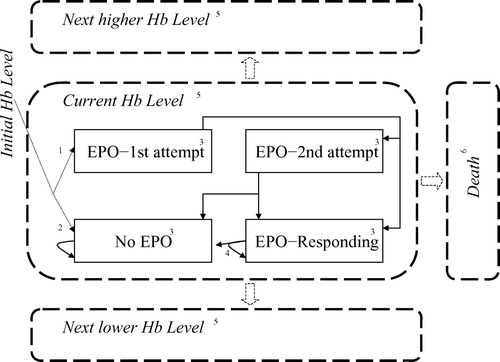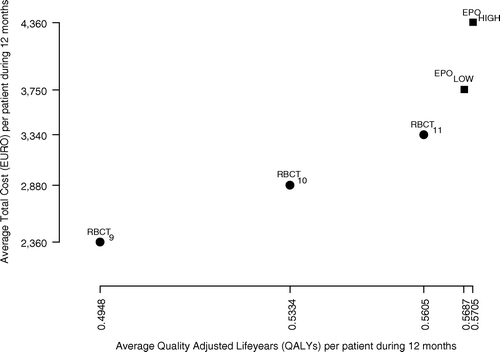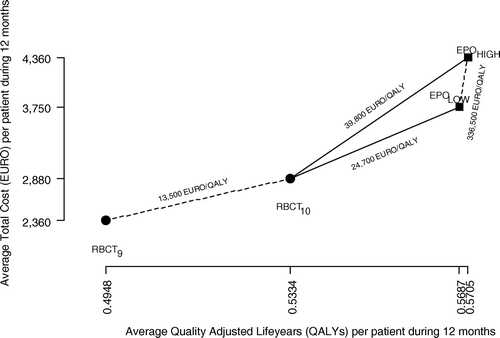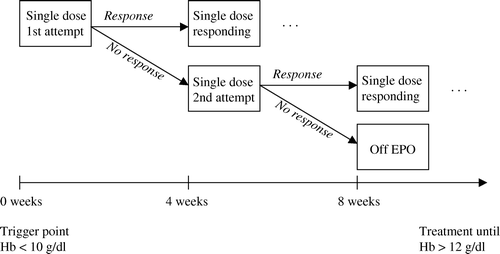Figures & data
Figure 2. Model structure. At the patient's initial Hb level, EPO treatment is initiated during two attempts, EPO-1st attempt and EPO-2nd attempt, respectively. If the patient responds (EPO-Responding), treatment continues until the target Hb level is reached. Otherwise treatment is stopped (No EPO). The Hb level is increased by EPO response, RBCT and normalization, and decreased by chemo-therapy. At all times, there is a risk of death. Notes: 1. Starting point for the EPO arms. 2. Starting point for the RBCT arms. 3. Each of these states are subdivided into RBCT and No RBCT, respectively, according to the current Hb level and trigger level for RBCT. If Hb < trigger level, the patient visits EPO-1 & RBCT, EPO-2 & RBCT, EPO-Responding & RBCT or No EPO & RBCT, depending on EPO treatment status. Otherwise the patient visits EPO-1 & No RBCT, EPO-2 & No RBCT, EPO-Responding & No RBCT or No EPO & No RBCT, respectively. 4. The patient remains in the EPO-Responding state until the Hb level reaches the target level for EPO, in which case the patient moves to No EPO. 5. The Hb levels are <8, 8–9, 9–10, …, 12–13, >13 g/dl. Within each Hb level, there is a group of states representing current EPO treatment status, and RBCT status in patients with that Hb level as illustrated for Current Hb Level. 6. The Death state is accessible from all other states.

Table I. Utility level by Hb-concentration and distribution of Hb level in the patient population at the start of the model evaluation.
Table II. Costs (EUR), QALYS and Incremental cost per QALY (ICER, EUR/QALY) of EPOLOW compared to RBCT10 treatment, base case.
Figure 3. Costs and effects of different treatment strategies for treatment of chemotherapy related anaemia, SEK 2007. Note: The EPO treatment target Hb levels are 12 g/dl for EPOLOW, and 13 g/dl for EPOHIGH, and both strategies use the trigger level of 10 g/dl for RBCT. The RBCT strategies use trigger levels of 9, 10, and 11 g/dl, respectively.

Figure 4. Cost-effectiveness of EPO and RBCT strategies; EPOHIGH versus EPOLOW, and both versus RBCT10, and RBCT10 versus RBCT9. Note: The EPO treatment target Hb levels are 12 g/dl for EPOLOW, and 13 g/dl for EPOHIGH, and both strategies use the trigger level of 10 g/dl for RBCT. The RBCT strategies use trigger levels of 9, and 10 g/dl, respectively.

